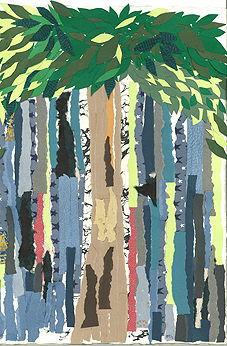The Fault Lines of Hindi and Urdu
Sanjay Kumar
The mind has faculties which are universal, but our habits are singular –Rabindranath Tagore One of the major issues that Satya Mohanty dwells on in his interview is the issue of cultural chauvinism and how it has come to plague literary studies whose ultimate goal seems to be production of exclusive and insular national or regional literary histories, each celebrating the greatness of its own literary traditions and the culture that has produced it to the denigration of others. In order to battle this tendency of cultural chauvinism he calls for “more comparative textual analysis across linguistic traditions“ and argues that “a more adequate literary history will be possible once we have transcended not only the artificial opposition between high and low cultures but also the huge wall conventional literary history erects between different−though related−linguistic traditions.“1 One such example of the huge wall conventional literary history has erected between related linguistic traditions or rather within one linguistic tradition is that of Hindi and Urdu. What was once a shared common language of people of India stretching from Peshawar to the borders of Bengal, split into two languages−Urdu and Hindi−towards the end of the nineteenth century. As a result, there arose two artificially separated literary cultures, each harking back to a different literary past due to chauvinistic attitude on the part of Hindus as well as Muslims. This cultural chauvinism was to subsequently embroil them into a practice of divisive politics during which language became a marker of their religious identity. With the passage of time the differences between the two sides became so irreconcilable that it led to the creation of a separate homeland for Muslims. In order to understand this contested history, we need to trace the genealogies of these two terms, Urdu, Persianized Khari Boli in Persian script, and Hindi, Sanskritized Khari Boli in Devanagari script. The term Urdu is of fairly recent provenance. We find it being used for the first time in 1780 in the First Diwan of Mushafi, but not in the sense of a language different from Hindi. In fact, the terms, Urdu and Hindi, continued to be used interchangeably until the first half of the nineteenth century and, in some instances, even later up to the early decades of the twentieth century. Initially, Urdu or Urdu-e-Muallah used to refer to the city of Shahjehanabad (not to military encampment or bazaar attached to the Mughal court as some historians suggest) and not to language. The term used for the language practiced in the city was “Zuban-e-Urdu-e-Muallah“ (speech of the exalted city). With the passage of time “Zuban-e-Urdu-e-Muallah“ was first shortened to Urdu-e- Muallah and finally to Urdu. Until the third quarter of the eighteenth century Urdu-e-Muallah or Urdu usually referred to Persian.2 In the earlier centuries, the names it went by in the North were Hindi or Hindavi. But Hindi or Hindavi did not just refer to this newly emergent lingua franca or Khari Boli, but to the whole gamut of north Indian vernaculars and dialects including Braj and Avadhi in order to distinguish them from Persian on the one hand and Sanskrit and Prakrit on the other. This rudimentary Khari Boli was to develop as a language suitable for literary use not in the North, its birthplace,3 but in the Deccan where it had spread with the Sufis in the late fourteenth century in the wake of Muslim conquest.4 It flourished under the patronage of the rulers of the Bahmani Kingdom. This language to be called Dakhini soon developed a distinct style of its own with words drawn from local vernaculars and dialects and relatively free of influence of Persian and Arabic. Quli Qutb Shah (r. 1580-1611), the fifth sultan of Golkonda (Bahmani kingdom broke up into five different states after 1518 A.D.) was a famous poet of Dakhini. Pages 1 2 3 4 5 6 7 8 |
Essays in this Forum
Rethinking the Global South
by Mukoma Wa Ngugi From Indian Literature to World Literature: A Conversation with Satya P. Mohanty by Rashmi Dube Bhatnagar and Rajender Kaur Asia in My Life by Ngugi wa Thiong'o The Global South and Cultural Struggles: On the Afro-Asian People’s Solidarity Organization by Duncan Mceachern Yoon The Fault Lines of Hindi and Urdu by Sanjay Kumar Reframing Colonialism and Modernity: An Endeavour through Sociology and Literature by Gurminder K. Bhambra Varieties of Cultural Chauvinism and the Relevance of Comparative Studies by Tilottoma Misra Literature to Combat Cultural Chauvinism: A Response by Shivani Jha Is There an Indian Way of Thinking about Comparative Literature? by E. V. Ramakrishnan Modernity and Public Sphere in Vernacular by Purushottam Agrawal West Indian Writers and Cultural Chauvinism by Jerome Teelucksingh Oral Knowledge in Berber Women’s Expressions of the Sacred by Fatima Sadiki |
